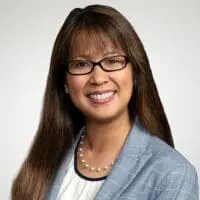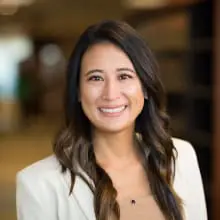Publication
SBA Issues Interim Final Rules for PPP “Second Draw” Loans and Existing PPP Loans
By Eric L. Kintner, Brett W. Johnson, Magnolia M. Movido and Victor J. Roehm, III
On January 6, the Small Business Administration (SBA) issued its Interim Final Rule (IFR) for the original Paycheck Protection Program (PPP-1) to reflect changes to the program included in the recent Economic Aid to Hard-Hit Small Businesses, Nonprofits, and Venues Act (Act). In addition, SBA issued its IFR for the newly created Paycheck Protection Program “second draw” loans (PPP-2) authorized by the Act. Companies who have received financial support from government sources due to COVID-19 impacts should review the status of such financing and the applicability of the new requirements.
These IFRs clarified the following issues:
1. Both PPP-1 and PPP-2 loans will be available through March 31, 2021.
The IFRs clarified that SBA will have the authority to make PPP-1 loans to new borrowers and PPP-2 “second draw” loans to prior PPP-1 borrowers through March 31, 2021. The maximum amount for PPP-1 loans remains $10 million ($20 million in a corporate group), and the maximum amount for PPP-2 loans is $2 million ($4 million in a corporate group). Today, the SBA announced that it will begin accepting PPP loan applications on Monday, January 11. In order to help ensure loans reach smallest businesses and underserved communities, SBA has issued guidance that they will only be accepting loan applications from community financial institutions for at least the first two days when the PPP loan portal reopens. As such, it may be important for potential borrowers to engage qualified lenders early to help ensure pre-application preparation occurs and there is no delay that could impact eventual award of the PPP loans.
2. Flexible base periods for PPP-1 and PPP-2 borrowers.
The IFRs clarified that new PPP-1 borrowers could choose 2019 or 2020 as the base period to calculate their maximum loan amount based on borrower’s payroll costs during the one-year period before the date the loan is made. These clarifications help ensure that new PPP-1 borrowers are able to obtain funding on terms commensurate with existing PPP-1 borrowers. In addition, the IFRs clarified that this base period flexibility would also be extended to farmers and ranchers, notwithstanding contrary language in the Act.
The IFRs also clarified that PPP-2 borrowers may use payroll costs during calendar year 2020 to simplify their calculations, notwithstanding language in the Act that requires borrowers to use either the 12-month period prior to when the PPP-2 loan was made or calendar year 2019.
3. PPP-2 borrowers have some flexibility to demonstrate 25%+ quarterly receipts reduction, but lenders must conduct a “good faith” review of such reduction before approving the loan.
Under the Act, PPP-2 borrowers must demonstrate a reduction of gross receipts during any calendar quarter in 2020 of at least 25% as compared to the corresponding quarter in 2019. The IFRs noted that quarterly revenue information may not be readily available and therefore clarified that borrowers that have been in business throughout 2019 can demonstrate the required 25% quarterly gross receipts reduction by showing an annual reduction of at least 25%.
Notwithstanding this flexibility, the PPP-2 25% reduction requirement may still slow down the approval process. The IFRs provide that for loans of more than $150,000, the lenders are required to perform a “good faith review, in a reasonable time, of the borrower’s calculations and supporting documents concerning the borrower’s revenue reduction.” If the lender identifies errors calculations or there is “a material lack of substantiation” in the borrower’s supporting documents, the lender is required to engage the borrower to remedy the issue. It is not clear what criteria lenders will use to establish a good faith review or a material lack of substantiation of the borrower’s reduction. However, this is another reason that borrowers may want to have a pre-application plan in place that documents the substantiation and the appropriate internal approvals, such as its board of directors.
4. Some newly eligible PPP-1 borrowers (i.e., 501(c)(6) organizations, housing co-ops, and nonprofit marketing organizations) must comply with new PPP-2 eligibility 300-employee threshold.
The Act expanded the types of eligible borrowers to include housing cooperatives, eligible 501(c)(6) organizations, and eligible nonprofit destination marketing organizations, but these newly eligible borrowers must employ no more than 300 employees, and they remain subject to the SBA’s affiliation rules. In contrast, existing PPP-1 eligible borrowers, including newly eligible news organizations, must have no more than 500 employees (or 500 employees per physical location, if applicable). In addition, eligible news organizations are exempt from the SBA’s affiliation rules. Therefore, as with all SBA programs and government contract/grants, borrowers should consider including an affiliation analysis in any international documentation substantiating the need for the PPP loan.
5.“Temporarily closed” businesses can still apply for PPP-1 and PPP-2 loans.
The IFRs include a new prohibition that “permanently closed” businesses that have gone out of business and with “no intention of reopening.” The IFRs note, however, that borrowers that have only “temporarily closed or temporarily suspended” but that intend to reopen remain eligible for a PPP loan. It is unclear how SBA will make this determination or what criteria will be applied.
6. New prohibition on publicly traded borrowers seems limited to publicly traded issuers and does not seem to apply to the subsidiaries or affiliates of such publicly traded issuers.
The Act included language that prohibited any “issuer” whose securities are listed on a national securities exchange from receiving PPP-1 or PPP-2 loans. The IFRs seem to clarify that this prohibition only applies to the actual issuer of publicly traded securities and does not also prohibit subsidiaries of the publicly traded borrower from applying for PPP-1 or PPP-2 loans. Again, though, the SBA’s affiliation rules would continue to apply to such borrowers.
7. No substantiation of payroll costs if PPP-2 borrower uses the same PPP-1 lender.
The documentation required to substantiate PPP-2 payroll costs is generally the same as PPP-1 loans.1 The IFRs clarify that PPP-2 borrowers do not need to submit additional documentation to substantiate payroll costs if the borrower: (1) used calendar year 2019 figures to determine its PPP-1 loan amount; (2) used the calendar year 2019 figures to determine PPP-2 loan amount; and (3) the PPP-2 lender is the same as the borrower used for its PPP-1 loan. However, borrowers may consider including such data in any internal documentation substantiating the need for the PPP.
8. New types of eligible expenses (i.e., covered operations expenditures, covered property damage costs, covered supplier costs, and covered worker protection expenditures) are applicable to both PPP-1 and PPP-2 borrowers.
Similar to PPP-1, the costs eligible for loan forgiveness in PPP-2 include payroll, rent, covered mortgage interest, and utilities. The new eligible expenses were added by the Act. To be eligible for full loan forgiveness, PPP borrowers will have to spend no less than 60% of the funds on payroll over a covered period between eight or 24 weeks. The IFRs make clear that these newly added eligible expenses can be used by both PPP-1 borrowers (to the extent they have not yet received loan forgiveness) and PPP-2 borrowers.
Conclusion
The Act, as explained and supplemented by the IFRs, is a substantial opportunity for businesses to obtain financial support as the COVID-19 pandemic lingers and the vaccine program becomes effective. However, as seen in recent enforcement actions, borrowers should ensure knowledge of the applicable requirements and consider performing internal due diligence that will substantiate qualification and need for the financial support.
Footnotes
-
PPP applicants must submit documentation sufficient to establish eligibility and to demonstrate the qualifying payroll amount such as payroll records, payroll tax filings, or Form 1099-MISC, Schedule C or F, income and expenses from a sole proprietorship; other supporting documents such as bank records must be provided if no other documentation is available.
About Snell & Wilmer
Founded in 1938, Snell & Wilmer is a full-service business law firm with more than 500 attorneys practicing in 17 locations throughout the United States and in Mexico, including Phoenix and Tucson, Arizona; Los Angeles, Orange County, Palo Alto and San Diego, California; Denver, Colorado; Washington, D.C.; Boise, Idaho; Las Vegas and Reno-Tahoe, Nevada; Albuquerque, New Mexico; Portland, Oregon; Dallas, Texas; Salt Lake City, Utah; Seattle, Washington; and Los Cabos, Mexico. The firm represents clients ranging from large, publicly traded corporations to small businesses, individuals and entrepreneurs. For more information, visit swlaw.com.




